Do Shipping Containers Need Foundations? It Depends.
 Marissa Morin | Nov 23, 2022
Marissa Morin | Nov 23, 2022

One of the greatest advantages of shipping containers is their mobility, but should you pour a foundation each time you relocate your shipping container? The short answer is probably not. If you have a single unit shipping container structure that you plan to keep mobile, you can place it directly on any flat, dry, and level surface. However, there are a few situations where some kind of foundation may be required. Here’s a simple way to find the right answer:
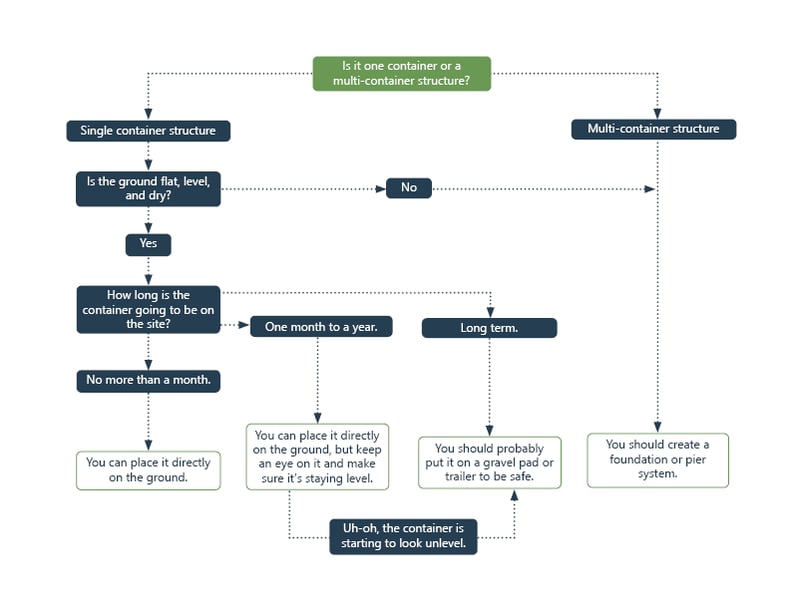
Soil Types Make an Impact
The soil composition of the container’s site will impact whether you need a foundation. In Texas and neighboring states, the soil tends to contain a lot of clay. Thus, containers placed directly on the ground tend to sink in the long term (think months to years).
However, a container placed on a hard substrate like granite may never need a foundation or a gravel pad, while a container in a bayou may always require concrete pilings. With that in mind, here is what has generally worked for our customers.
1. You have a single unit container structure that you’re going to relocate often
Recommendation: Consider placing the container anywhere that’s flat (less than a 2-percent grade), dry, and level, including bare earth and parking lots.
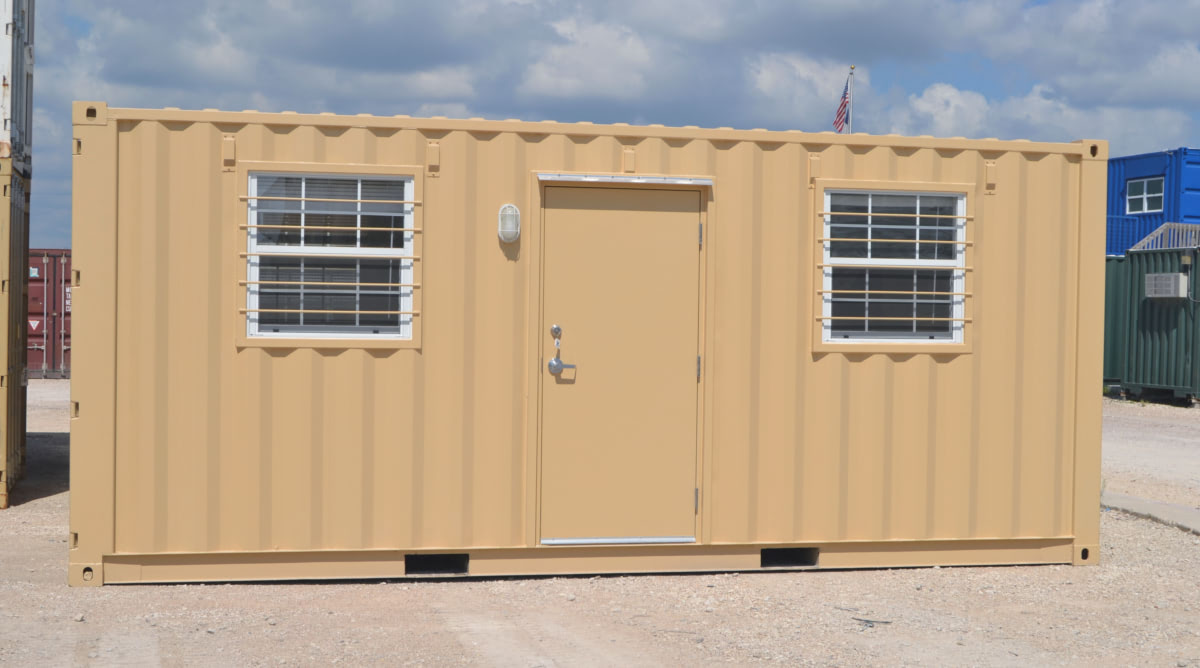
Construction companies often keep their storage containers on the move. The steel floors of the containers enable them to save thousands of dollars and hours of hassle because they can place their onsite storage containers in a parking lot or the bare earth.
2. You have a single unit container structure that’s going to spend long periods of time (1 month+) in one place
Recommendation: The container may be able to go on bare earth but consider creating a gravel pad.
If the container is going to be spending a long period of time on bare earth, there’s more risk of the container settling into an unlevel position over time. If the container is unlevel, the doors will become difficult to open.
Keeping the container level also becomes important if you have plumbing. Wastewater runs downhill, which is why plumbing lines have slope. A crooked container can tip plumbing lines to the wrong angle, and you’ll run into an odorous problem.
You can place the container on bare earth but check it every month or so. If the container appears to be sinking or tilting, you should consider moving the container to a gravel pad. Preparing a simple, three-inch deep gravel pad will facilitate drainage under the container and level out irregularities in the ground.
3. You have a multi-unit container structure
Recommendation: Pour a foundation or create a pier system.
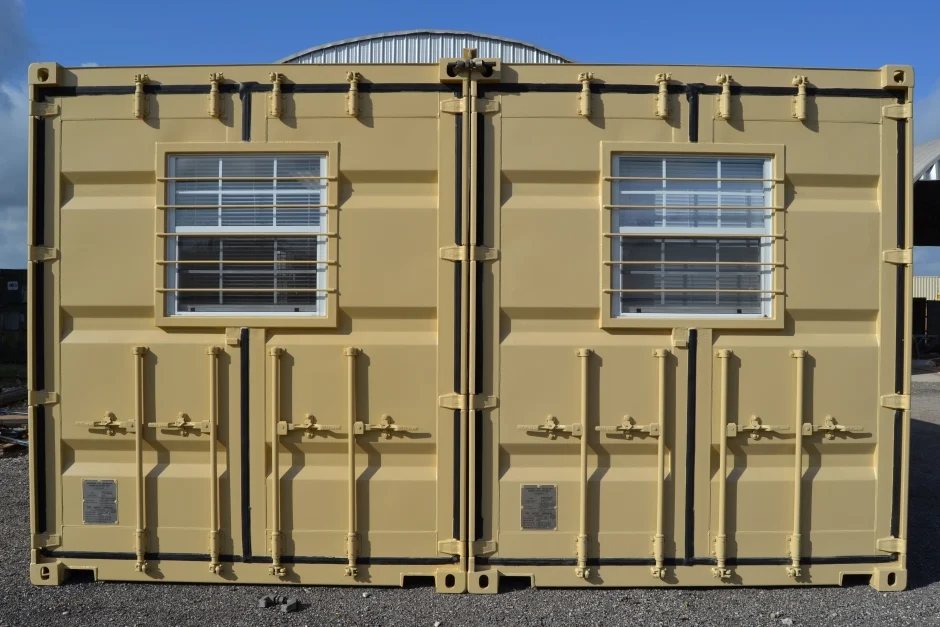
If you have several containers joined into a larger building, a foundation or piers become mandatory. You don’t want one container to start drifting off the larger structure because the soil beneath gave way. Consult a soil specialist to assess how deep your foundation or piers should be, keeping in mind that the weight will sit exclusively on the corner castings.
In Summary, Keep Your Container Level
The running theme here is to keep your container structure level. Because lop-sided containers lead to sticky doors and plumbing problems, a level container will ensure you and your things are protected for the life of the container.
We’re happy to consult with you on your container project. Contact us at 512-231-1010 or email us at Sales@FalconStructures.com.
SUBSCRIBE
- Shipping Container Modifications
- How-Tos
- Workspace
- Commercial Construction
- Multi-Container Buildings
- Storage Solutions
- Industrial Enclosures
- Bathrooms & Locker Rooms
- Oil & Gas
- Climate Control
- Green Building
- Living Space
- Industry Insight
- Military & Training Facilities
- Water Treatment Solutions
- Energy
THINK INSIDE THE BOX®
WITH OUR BLOG
Get everything from shipping container basics, to detailed how-tos and industry news in our weekly blog. Stay inspired and subscribe!
RELATED BLOGS
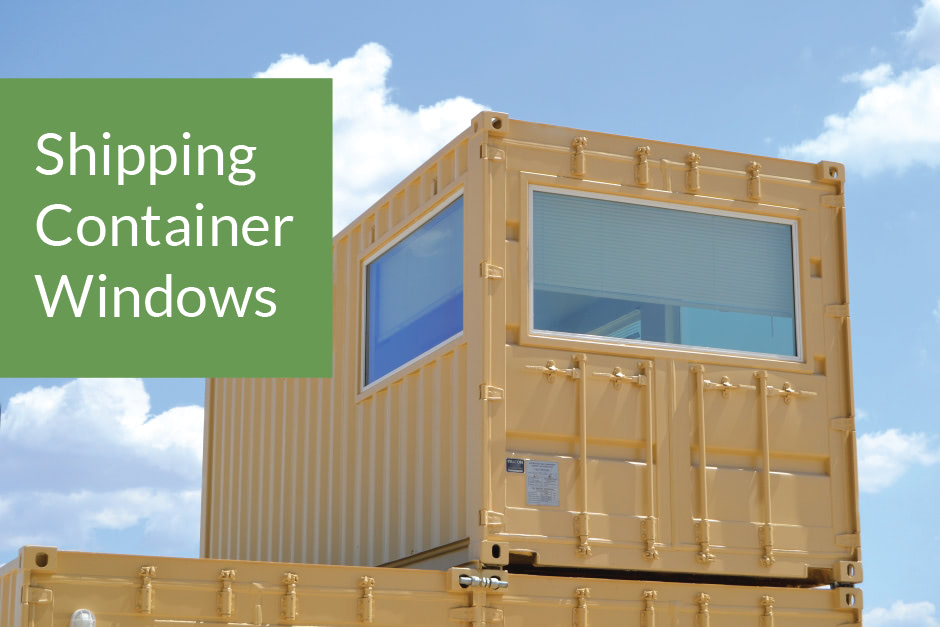
Choose the Best Windows for a Shipping Container Structure
Marissa Morin | Nov 20, 2019 | 4 min read
READ MORE
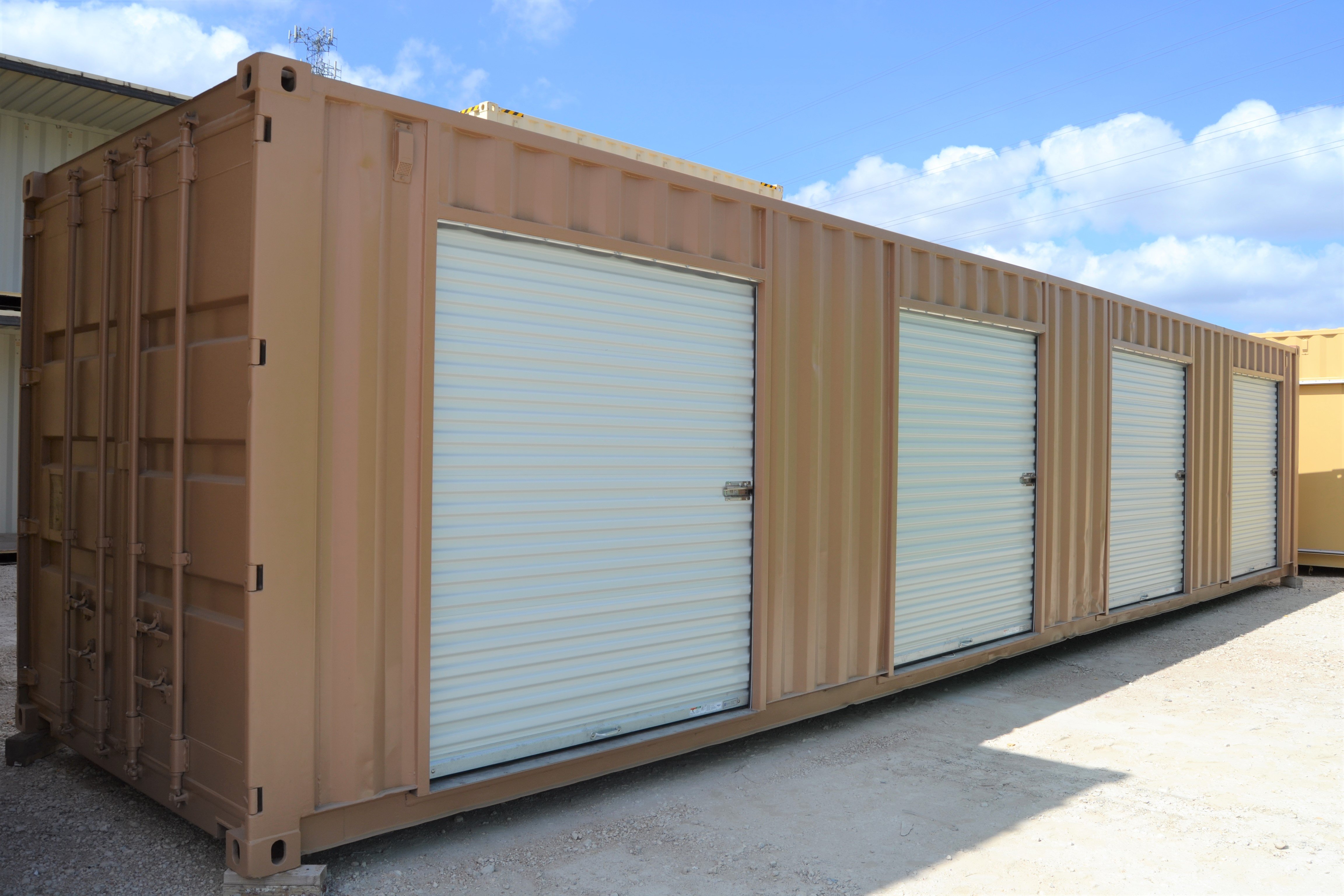
How Shipping Containers with Side Doors Benefit Your Work
Marissa Morin | Jun 7, 2023 | 3 min read
READ MORE
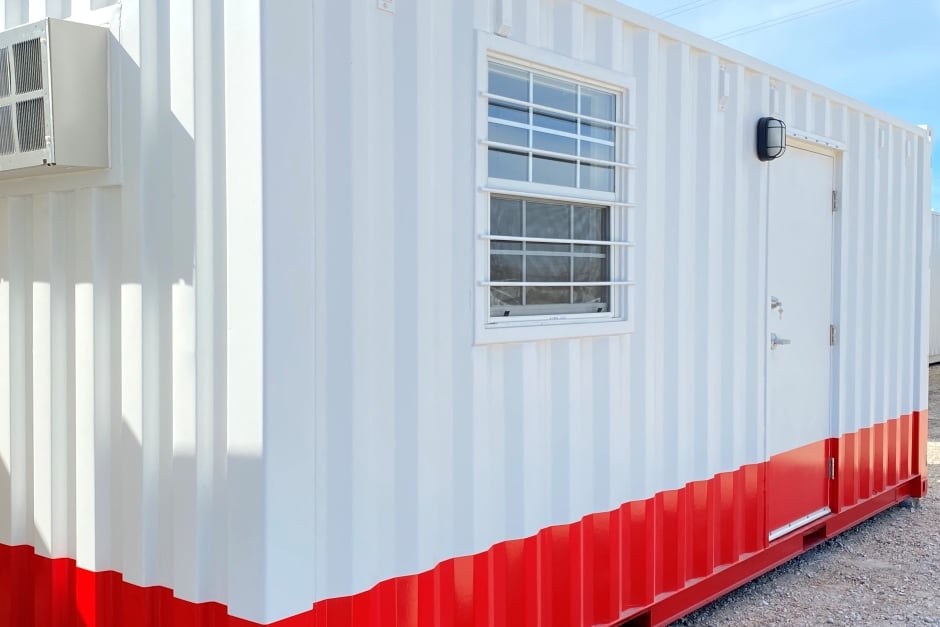
Office Trailers vs. Office Containers—What’s the Difference?
Marissa Morin | Apr 5, 2023 | 4 min read
READ MORE
